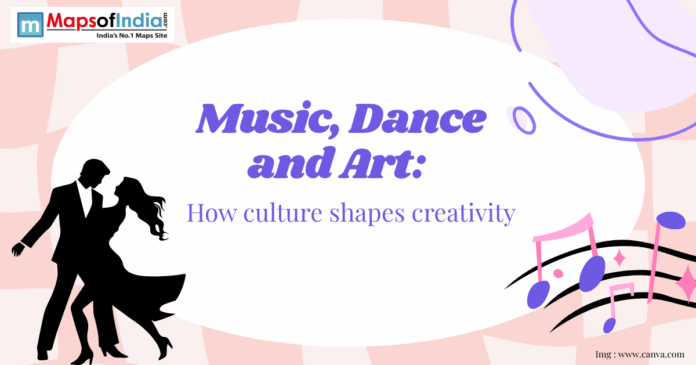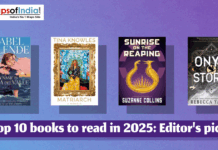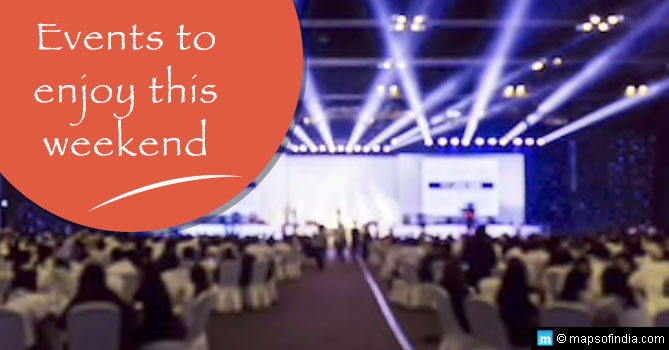Culture has always been an important aspect of being human. It can also be seen as a guiding force that is created by humans. Music, dance, and art are not limited to the form of human entertainment. But they have turned a bit more. They are reflections of the values, traditions, and emotions of society that we live in. Across various historical periods and various geographical locations, culture has played an important role in influencing creativity across the globe in ways that continue to inspire and evolve over time.
The Connection Between Culture and Creativity
If we define culture, we can say that culture is a shared system of beliefs, practices, and traditions that are practiced by humans. When people start to express these shared elements through music, dance, and art, that time creativity starts to emerge. Cultures vary according to the regions, and each culture provides its own symbols, narratives, and aesthetics that guide one’s creative expression. From indigenous songs of a particular region to modern digital art, the cultural context of these arts gives any kind of creativity both meaning and direction. Without the backing of culture, creative work done by anyone loses its depth and connection to the community.
Music as a Cultural Expression
Music is one of the most powerful things that define the culture. Every community, over time, develops its own musical traditions. These traditions are shaped by language, instruments, and rituals which they practice over time. Folk songs practiced in certain regions often carry stories of their ancestors, while at the same time, religious music reflects spirituality. Now various music genres like jazz, reggae, and hip hop emerged from specific cultural struggles and experiences faced by those people. Later, these cultural trends spread across the globe. Culture not only influences the way music is sung but also the way music is performed and shared within those communities.
Dance as a Reflection of Identity
Dance is the form through which cultural stories are brought to life through physical movement. The traditional dance forms are practiced to preserve rituals, celebrate milestones, and pass down their cultural heritage. You can see that various classical Indian dances, which are performed in various parts of India, have dance forms that are tied to Indian mythology. While Latin dances like salsa show community building and celebration. The forms of Dance start to evolve as various cultures interact. The rise of globalization has created fusion forms that combine traditional steps with modern styles. When the dance is embodied with culture, its symbolic meaning turns movement into a language of identity and connection.
Art as a Mirror of Society
Through visual art, various societies have always reflected the values and struggles of various communities. The paintings that are done on the cave walls show the ancient hunting scene and their struggle for survival. Renaissance art celebrated humanism and faith. The modern art that developed in various nations explores themes like identity, conflict, and social justice. The culture around the community is shaped by what artists in that community create. Small things like which kind of colours they use for the themes they want to show are important. Art from these communities becomes a record of cultural change happening around them, documenting how societies evolve over time. Through different art forms like painting, sculpture, and digital media, artists from different cultural backgrounds translate their own cultural experiences into visual language.
The Role of Tradition in Creativity
Tradition plays an important role in creativity; it anchors creativity in cultural memory. Rituals, customs, and heritage performed by the communities give them the frameworks that guide artistic practices happening around them. Many artists and performers learn from elders of that community, ensuring that certain art forms are passed across the generations. But at the same time, tradition is not a static thing. New interpretations of these traditions emerge as each generation adapts traditions to contemporary realities. This tension that took place between preservation and innovation of culture keeps culture alive in various parts.
Cross-Cultural Influences
Culture is always influenced by the various cultures around it. Cultures rarely exist in isolation. Things that happened around us in the world, like trade, migration, and globalization, made various ideas flow across various cultural boundaries. Music, dance, and art evolve when these art forms from a specific culture are exposed to new cultural influences. Contemporary dance often mixes ballet with street styles that have been developed over different periods of time in different regions. Cross-cultural exchange that took place between various cultures fuels creativity by introducing fresh and different perspectives and techniques.
Music as a Universal Language
Music is the only thing which, despite having various cultural differences, often transcends borders. People do not need to understand language or culture to enjoy music. People from different backgrounds can connect through rhythm and melody. Music festivals and concerts can bring people from various backgrounds together to celebrate. The global musical events show shared human emotions. Music is always rooted in its culture, and at the same time, it also unites different cultures by reminding us of universal human experiences like joy, love, and loss. Music has this dual nature, which makes it both deeply cultural and universally human.
Dance as a Community Builder
We can see dance as a community builder. Various dance forms thrive in different community spaces. Maybe these are the dances performed in traditional cultural ceremonies or at clubs in the cities; dance strengthens social bonds between people. Dance derives its context from the culture it originates from. But at the same time different kinds of creativity in this dance form makes it a shared experience. In many societies, dance rituals are considered very important, such as weddings, harvests, or coming of age. In recent times, dance classes and online tutorials have created new communities around a shared passion for dance. This cultural foundation of dance continues to inspire communities.
Art as Storytelling
Art is a form of storytelling which tells the stories that define various cultures. The expression of art can be seen in various forms around us, from murals on city walls to digital installations in galleries. Art expresses the narratives of people that words alone can not express. Lived cultural experiences of people shape the subjects of these stories. Through Indigenous art forms, locals often preserve myths and landscapes. Contemporary art is trying to explore themes of identity in this globalized world. With the form of storytelling, art bridges generations and ensures that cultural memory remains alive.





